Marcel Portmann CFE, associate partner at FranLaunch USA, explores the F&B franchising trends to watch in Latin America, including perspectives from three expanding brands in the region.
Having lived and worked in multiple countries as a global franchise executive, I’ve had the pleasure of working with a number of franchisor brands expanding across Latin American markets since the 1990s. I’ve learned that the one consistent rule of franchising in Latin America is that no consistent rules apply across all countries in the region. Vast differences in geography, cultures, business styles, regulatory environments, and economic conditions make cross-border franchising in Latin America a complex endeavor. The large franchise brands have penetrated the region with varied successes and challenges. However, when we look closer at smaller and regional brands, two recent trends stand out among food and beverage brands in the region.
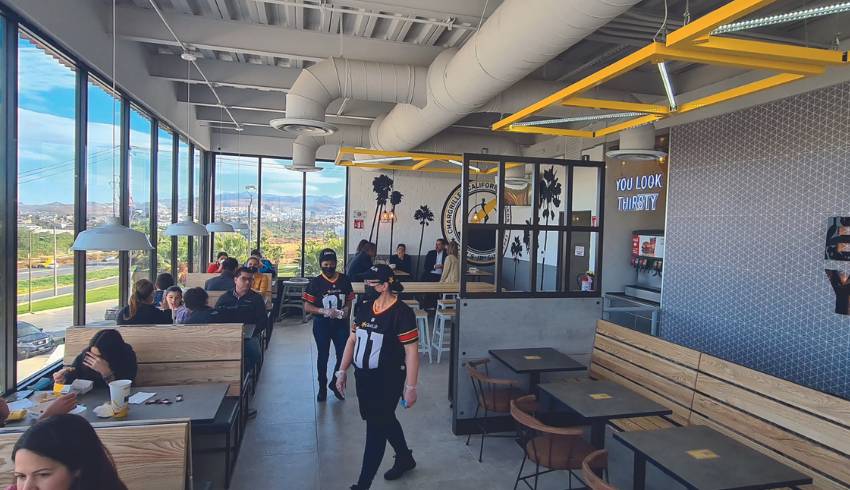
1. Smaller unit format and design
One trend among growing F&B franchises in Latin American markets is their careful evaluation and flexibility related to the size and format of individual franchise locations. Of course, these considerations are closely tied to unit economics, site selection, demographics, and restaurant operations. Obviously, these factors may vary greatly by country and local market.
Moreover, Latin American F&B franchisors faced the same challenges as the rest of the world during the pandemic, which forced major format changes, such as delivery and drive-thru options. Pandemic impact aside, flexibility in format is nothing new for F&B franchises. Franchise brands have adapted their format for food courts and drive-thru locations for more than 50 years.
Specific to Latin America, what we’ve seen in recent years is a general trend towards smaller units and more customerordering options for delivery or takeout. Given the average age in Latin America is 31 years old, we also see franchise brands that are increasingly positioned toward a younger customer base.
Shopping malls are also driving a trend toward smaller locations. Consumers in Latin America are drawn to shopping centers that can offer multiple options, from retail to F&B to medical offices and other services. These shopping venues enjoy the dual benefits of convenience, along with greater security for tenants and customers alike.
The current development of franchise brands in the region is not limited to the large global brands. Instead, we see an increase in cross-border expansion from countries within Latin America, with nearly 6,500 franchise brands that are indigenous to Latin America, as reported by the Front Consulting International Group (FCI).
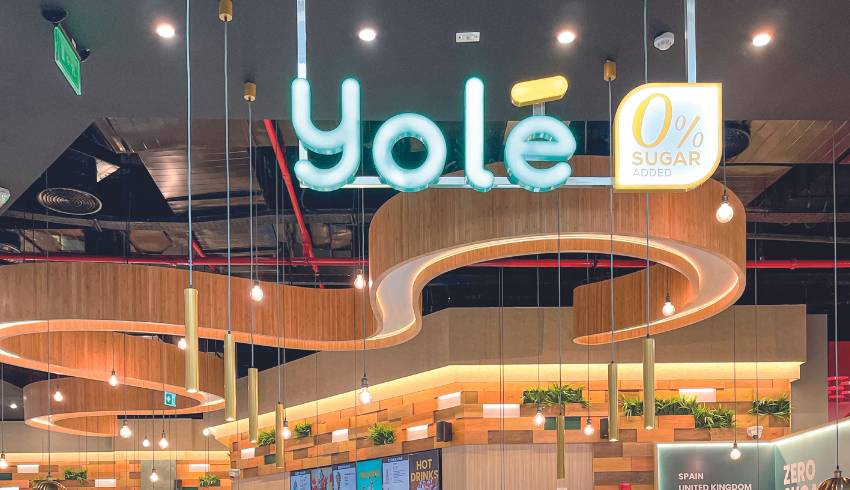
2. Adoption of new technologies
In a region where tech entrepreneurship is thriving, Latin American franchisors are not lagging behind. They’re leveraging cutting-edge technologies to enhance operations, drive customer engagement, and ensure competitive advantages.
Rogelio Martinez is an international franchising veteran and the President of Fast Cloud Consulting. Headquartered in Miami, with regional offices in Colombia and Costa Rica, Fast Cloud is a SalesForce.com Partner specializing in tech solutions for sales and operation processes. Fast Cloud services customers across the Americas, including large and small franchise brands.
“Latin America’s tech landscape is rich and diverse, offering franchisors a smorgasbord of opportunities to scale, innovate, and excel,” says Martinez. “Adopting these emerging technologies isn’t just beneficial – it’s essential for long-term success.”
According to Martinez, the most exciting technology trends catching fire in Latin American franchising include:
AI for customer engagement:
Artificial Intelligence (AI) isn’t just a buzzword anymore; it’s a necessity. A 2021 report by McKinsey highlighted that AI adoption in Latin American businesses is increasing at a pace of 25 per cent year-over-year. Franchisors are using AI-powered chatbots and data analytics to personalize customer experiences. With the debut of AI tools such as ChatGPT and others, AI is predicted to completely transform the way businesses interact with their customers and peers within the next 10 years.
IoT for operational efficiency:
Internet of Things (IoT) is another area of tech rapidly gaining ground. According to a Gartner, forecast, by 2025, Latin America could see a surge in IoT-related revenue, potentially reaching up to $50 billion. Franchisors can benefit from IoT by streamlining supply chains and inventory management, thereby reducing operational costs.
Digital payments and blockchain:
Digital transactions are at an all-time high, with projections indicating a $10 billion increase in mobile payments in the region by the end of 2023. Moreover, blockchain technology is adding an extra layer of security and transparency to these transactions, a feature that appeals to both consumers and business owners alike.
E-commerce and mobile apps:
The pandemic has accelerated the e-commerce trend, with online retail sales in Latin America growing by 36.7 per cent just in the first year of the Covid-era, as per a report by eMarketer. Franchisors are making the most of this trend by launching mobile apps and online platforms, ensuring they’re just a click away from their customers.
“Franchisors in Latin America are not just adapting to the technology; they are embracing it wholeheartedly, signaling a future where tech-savvy franchises will rule the market. With trends like AI, IoT, and blockchain taking center stage, the region is all set to redefine the franchising game,” adds Martinez.
We spoke with three growing food service franchisors to better understand the trends in store format and store design in Latin America, as well as the evolving role of technology.
The U.S. contender: Carl’s Jr.
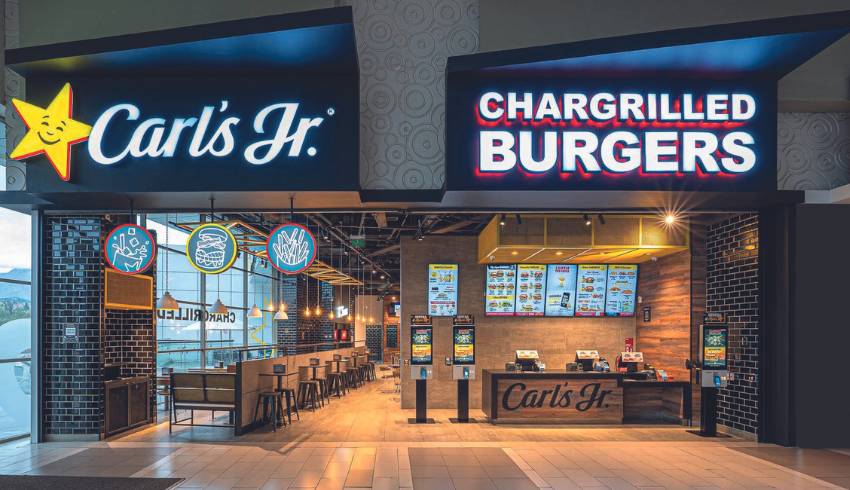
U.S.-based Carl’s Jr. began its international growth in Monterrey, Mexico, in 1991. Since that first location, Carl’s Jr. has grown into a leading QSR brand in Mexico, with more than 350 restaurants in nearly every Mexican state from north to south. According to Marc Mushkin, vice-president of international franchise sales & development at Carl’s Jr., “National surveys and research as well as sales trends, show that Carl’s Jr. holds the position as the number one burger quick service restaurant (QSR) brand in Mexico.”
Beyond the Mexican market, Carl’s Jr. has expanded into seven other Latin American countries and territories, across the Caribbean, Central America, and South America, including a total of 60 restaurants operating today and 119 additional restaurants slated to open in the next four years. Carl’s Jr. also has deals under negotiation in Brazil and other countries in the region.
Format and design
According to Muskin, Carl’s Jr. in Latin America has evolved greatly since entering the market, with the changes over the past five years being the most dramatic.
Carl’s Jr.’s “All-Star Service,” a limited style of service where dining room guests are brought their food by dining room attendants, has been a key brand attribute for decades. As a result, their dining rooms remain popular in Latin America, especially where family business dominates. In the north of Mexico, Carl’s Jr. multi-unit franchisees continue to build larger free-standing drive-thru restaurants with footprints of 250-350 sqm+ (about 2,700-3,800 sq. ft.+). These larger formats are in addition to the more compact and efficient smaller formats the company has developed. “In Mexico City, however, our franchisee is seeing phenomenal sales from inline restaurants (140-200 sqm/1,500- 2,200 sq. ft.) and food court formats,” adds Mushkin.
“Most exciting has been the development of the next generation OMNI Channel prototype in multiple restaurants in Latin America over the past 24 months,” continues Mushkin. This innovative, modular design provides flexible seating (from zero to 100+ seats), multiple ordering platforms (QR code from the car or the table; kiosks, drive-thru, carry-out), and dedicated delivery zones. Carl’s Jr. predicts that this model will dominate its development in the coming years.
Role of technology
Mushkin points to three key technology trends seen among the Latin American franchise network. “Carl’s Jr. franchisees throughout Latin America are adapting to developing consumer trends in the adoption of QR code ordering, the use of dedicated apps, and in-dining ordering using kiosks, rather than staffed POS stations,” states Mushkin. “Ticket averages from kiosks have been generating an increase of over 20 per cent since the pandemic, and deployment of these features has been increasing steadily.”
Mushkin also notes that artificial intelligence (AI) is an initiative being developed in Carl’s Jr.’s U.S. home market, and their Latin American franchisees are watching this development closely. “Other new technologies being utilized by our franchisees include table-identifying transmitters for table delivery efficiencies, the use of cell phone data in site selection and forecasting, and new marketing initiatives driven by social media and digital tactics,” adds Mushkin.
The European Contender: Yolé
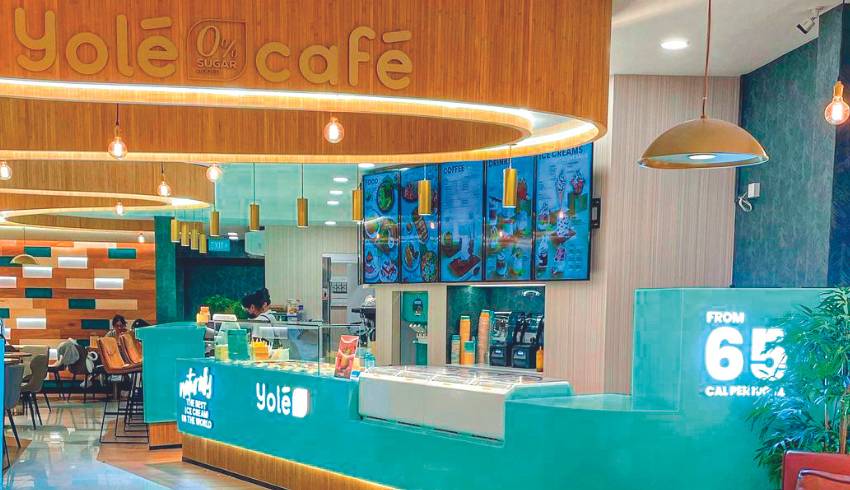
A relative newcomer to Latin America is Yolé, a health-focused ice cream and frozen yogurt franchise based in Spain. Only recently founded in 2019, Yolé has already seen successful brand expansion in Europe, Asia, Middle East, and Canada. Last year, Yolé began to explore the development of markets across Latin America. Their first location in the Americas recently opened under a master franchise in Santiago, Chile in June 2023 and Yolé has signed additional Latin American master franchises for Mexico, Guatemala, and Costa Rica, with new unit openings planned in all these markets by year-end 2023.
Format and design
Miguel Díaz is co-founder and managing partner of Yolé, and responsible for expansion in the Americas. “Yolé is an aspirational brand, where the customer is attracted by a unique product — the world’s healthiest and tastiest ice cream,” states Díaz. “Following this philosophy, our units have a contemporary, natural, and attractive design. Nevertheless, our design may be adapted to nearly any location where we see an opportunity to exploit an influx of traffic.”
As a result, Yolé’s format ranges from food trucks (9 sqm/97 sq ft.), to kiosks (15-25 sqm/160-270 sq ft.), or typical ice cream shops (from 30 sqm/320 sq ft.) When the size of the premises is more than 60 sqm/640 sq ft.), Yolé offers two larger formats. The “Flagship Yolé” has a large area of tables for ice cream and milkshakes, and the “Yolé Café” is a minimum of 100 sqm/1,076 sq ft. cafeteria, which has shown good market acceptance in multiple international markets.
“Our range of formats provides our local franchisees with better opportunities for expansion within their diverse local markets,” explains Díaz. “Site selection is more efficient since our franchise will fit almost any size of space.”
Role of technology
“At Yolé, we view technology not as a business objective, but as a means through which we have developed our truly unique products in terms of health and taste, which are unmatched worldwide,” says Díaz. To achieve this product goal, the Yolé business model starts with a strong emphasis on research and development. Food science plays a major role in the Yolé product offering both in terms of health benefits and flavor. This R&D also extends to other essential aspects of the business, such as supply chain improvements. For example, product ingredients are packaged for ease of transportation worldwide and are stored dry, not cold.
The Central American contender: Cosechas
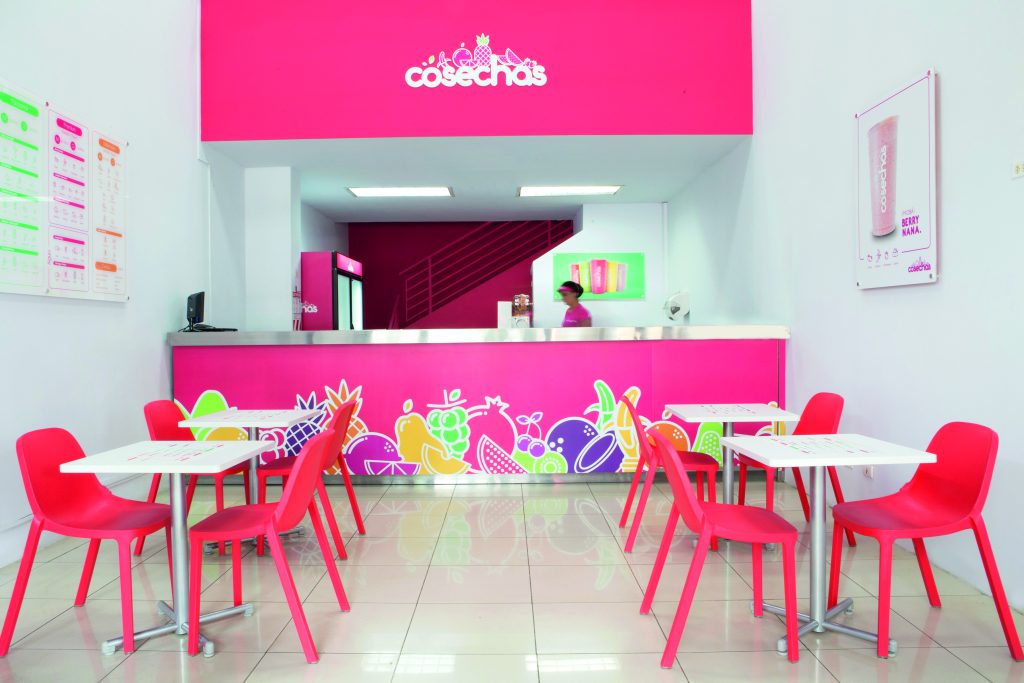
Cosechas (English translation “Harvests”) started in Costa Rica in 2008, without a clear plan or strategy to franchise its business model. The first opening was simply a local juice store intended to demonstrate the usefulness of a certain packaging technology, which was the company’s main business concept at that time.
According to Carlos Eduardo Hernandez, general director and founder of Cosechas, “Although we originally intended to become a food packaging distributor, customers were more interested in our concept of a simple smoothie shop, which offered fast service of custom smoothies with 100 per cent natural ingredients at a very competitive price.”
Based on the popularity of their smoothie shop model, Cosechas began franchising several locations, and from 2009 to 2010, Cosechas became the fastestgrowing micro franchise in its home market of Costa Rica (population 5.1 million) with 40 shops across the country. Several years later, Cosechas began expanding in Colombia, where it currently has over 500 locations.
Cosechas arrived in Brazil in 2019 and immediately earned a loyal following of Brazilian customers. As a member of the Brazilian Franchise Association (ABF), it now has more than 250 stores open in the major cities and regions of Brazil, with accelerating growth. “Given Brazil’s market size (214 million population), we have only scratched the surface. We foresee hundreds more store openings in the next few years,” states Hernandez.
Format and design
Unlike Carl’s Jr. and Yolé, which have a wide range of formats, the Cosechas strategy is more of a “one-size-fits-all” approach with a small, simple, and consistent design in the form of a kiosk or small storefront, limited to a size of 10 to 20 sqm (108 to 215 sq ft.) “In previous years, when we tried opening locations larger than 20 sqm, we quickly learned that bigger locations were not a good fit with our core business strategy and economics,” explains Hernandez. “The smaller 10 to 20 sqm format fits our business perfectly, both in terms of the operational model and the financial model, and it is now our standard for Brazil. Based on this track record of success, we plan to use this store design as our blueprint for expanding into future international markets.”
Role of technology
“The adoption of technology by our Latin American franchisees may be exemplified by the use of POS systems, as well as AI in applications related to social media and order processing,” says Hernandez, “and we are currently analyzing the implementation of other AI systems as well. However, the adoption of some of these technologies is currently limited in rural areas of Latin America, given poor connectivity and higher cost of implementation.”
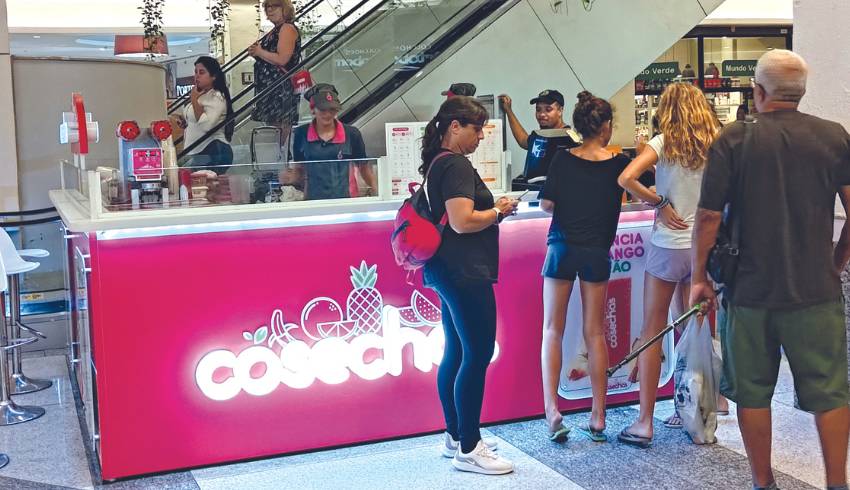
Four takeaways for foreign investors
What do our case studies mean for franchisors seeking to expand in Latin America? Here’s what we know so far:
- Be aware of the growing diversity of store designs and formats. With very diverse markets across Latin America, it is critical to do your research and match each market with the best store design and footprint.
- Don’t assume that Latin America is “behind the curve” on tech trends. With a thriving tech landscape and a younger demographic, franchisors should use multiple technology tools to optimize their quality of product, marketing, and customer experience.
- Local and regional franchise concepts are playing a growing role in Latin America’s competitive landscape. Benchmarking based on the big global brands is only part of the picture. Franchisors should also have a good understanding of local and regional franchisors, who shape much of the franchise landscape throughout Latin America.
- The Brazilian market is still in play… and with a population of 214 million, it’s huge. In recent decades, many international franchisors – especially American brands – avoided Brazil because of various barriers to entry and a very slow government approval process (sometimes up to a year from deal signing to approval). Given the recent success of Cosechas in Brazil, perhaps international franchisors – especially those with smaller store formats – should take a fresh look at the long-term potential of the Brazilian market.
Interested in a Latin American franchise? Check out the Global Franchise directory


